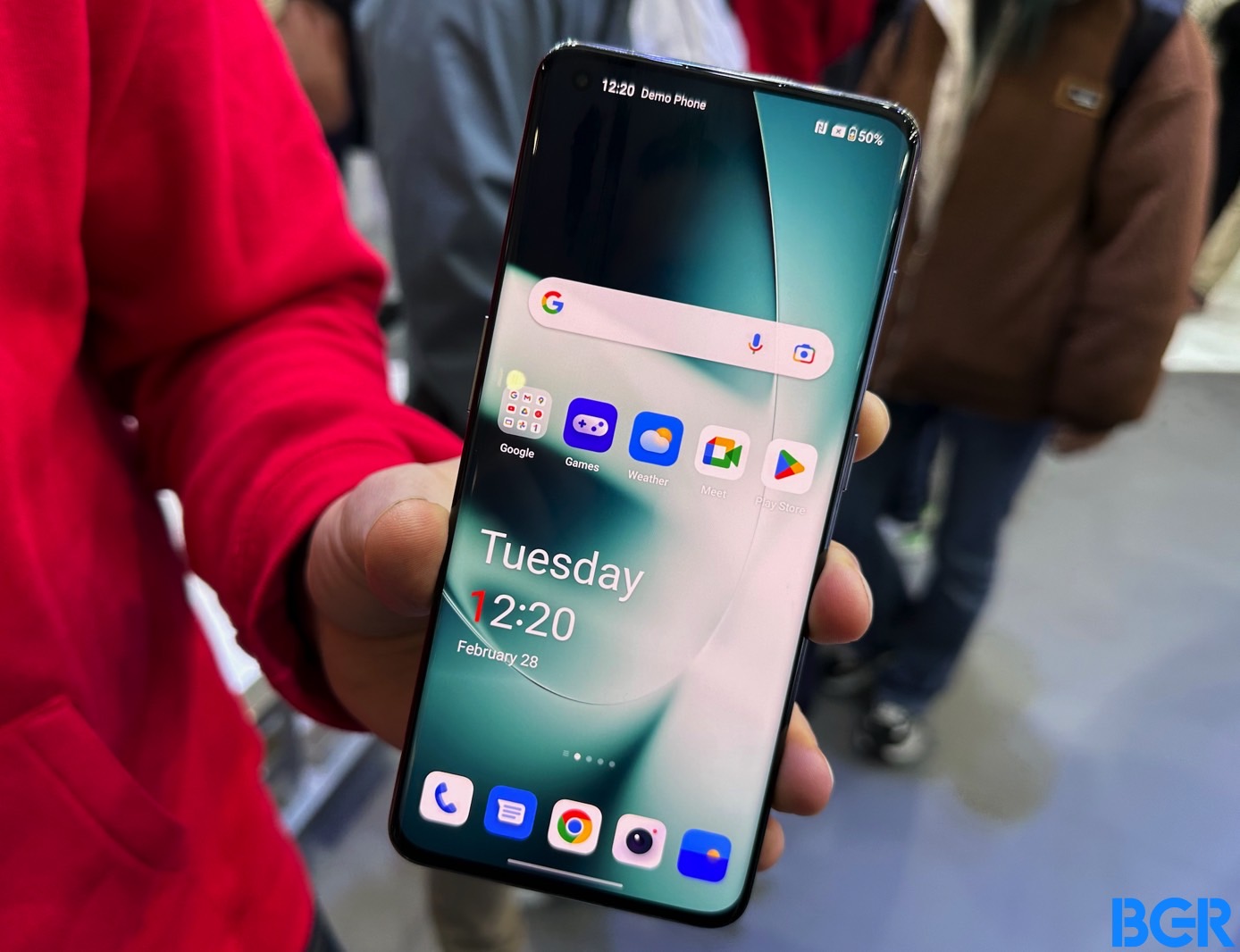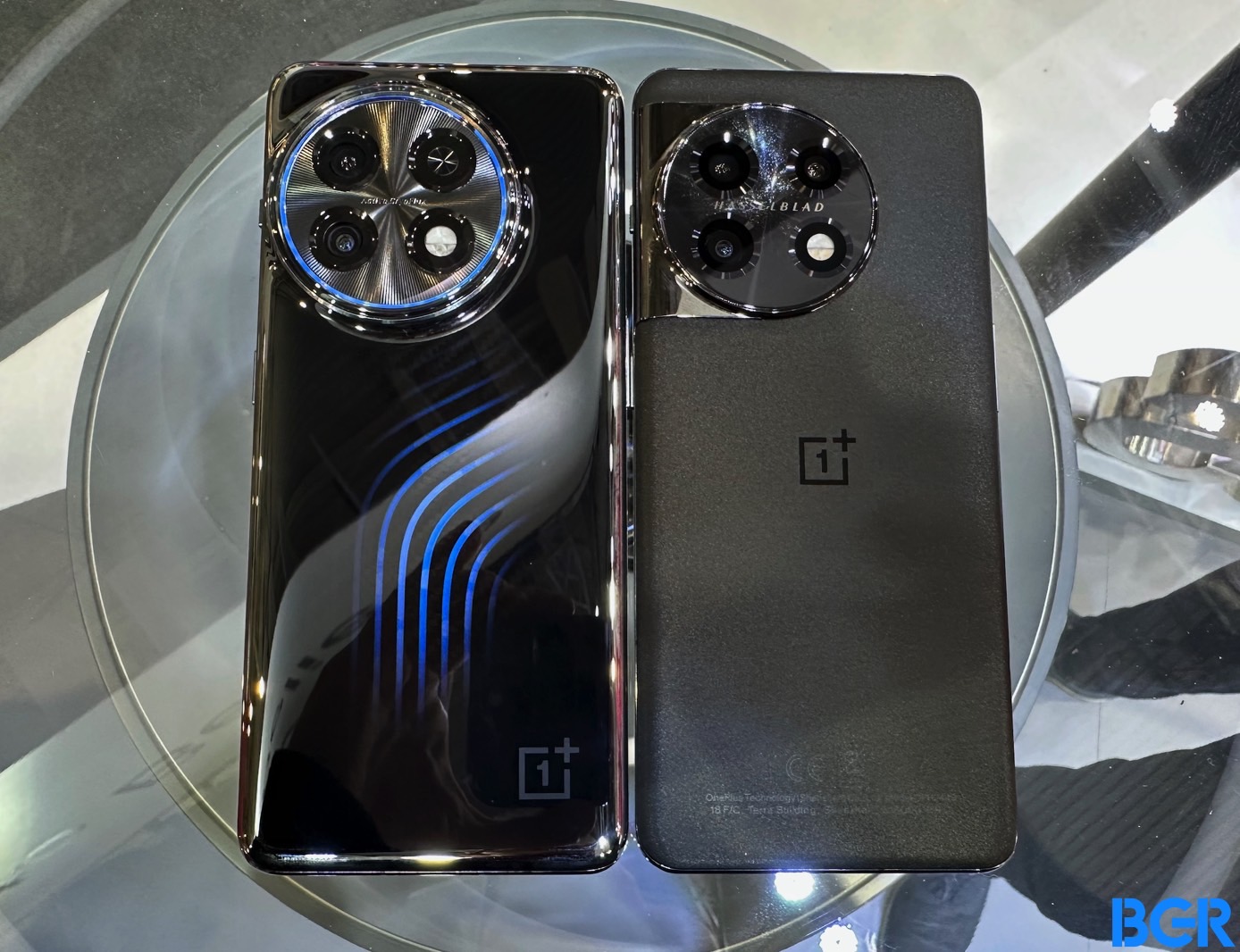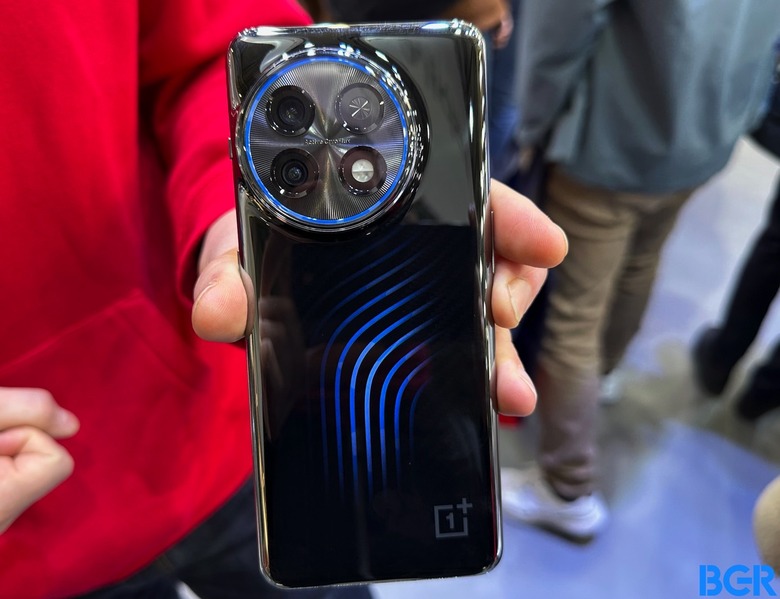OnePlus 11 Concept Has A Crazy Design That Shows Active Water Cooling In Action
OnePlus brought a OnePlus 11 Concept phone to MWC 2023 that features water cooling. But the cool part is the fact that you can actually see the pipes carrying the Active CryoFlux liquid on the back. They light up in blue and white, as seen in BGR's hands-on OnePlus 11 Concept images, and we're not looking at some LED-based gimmicky feature like what we've seen from Nothing.
The Nothing Phone 1 recently made some buyers care about what the back of the smartphone does. Others think Phone 1's visual antics are just a gimmick to set the mid-range phone apart. The rear side of a traditional smartphone does not matter. That's why the iPhone's camera bump doesn't matter, either. But OnePlus seems interested in making the back of its phones stand out for a different reason with this concept demo. It's the cooling part that matters.
In addition to bringing all of its newest devices at MWC 2023, Oppo-owned OnePlus also demoed the OnePlus 11 Concept variant in these photos.
What you see on the back isn't a skin applied to the rear-facing glass panel. It's not a useless animation like the Nothing Phone 1, either. Instead, we're looking at a backlight shining on the phone's water-based cooling system.
OnePlus mixed in water and oil to achieve the visual effect demonstrated in the concept. A commercial phone featuring an active cooling system like this would contain only water.

OnePlus told me that water cooling improves the phone's performance while gaming. You're looking at an improvement of 3 to 4 frames per second during gaming sessions.
Aside from the visible water (and oil) cooling, this is a regular OnePlus 11 phone. That means a Snapdragon 8 Gen 2 processor powers it. The water cooling would merely prolong peak performance.

Another beneficial side effect of water-cooling the handset concerns fast battery charging speeds. The phone needs a minute less to reach a full charge. It might not seem like much, but it's certainly a way to prove the water-cooling system works. That it's not just a gimmick.
As for the water ring around the camera module, there's no way to measure how that component of the active cooling system works or what it does for a flagship OnePlus handset. One benefit of having the camera components cool down like that might concern 4K video recording.
The future is here.
Introducing the #OnePlus11Concept, a visionary smartphone with industry-first Active CryoFlux cooling technology. #MWC23— OnePlus (@oneplus) February 27, 2023
While the MWC OnePlus concept phone is a OnePlus 11 handset, it's not a perfect replica. And I'm not just talking about the phone's rear-facing camera module's slightly different design. The concept device is somewhat thicker, even if imperceptibly so. After all, the handset has to account for the rear-facing light source and pipes that move the Active CryoFlux liquid.
As for the water flow, it moves at a constant speed regardless of what the phone is doing. It won't speed up or slow down depending on how hard you push the silicon. An "industrial-grade piezoelectric ceramic micropump" drives the flow through the pipelines, which take up about 0.2 square centimeters of internal space.

That said, don't expect to be able to buy a OnePlus 11 Concept phone with Active CryoFlux water cooling anytime. We're a couple of years away from OnePlus introducing the technology. But the OnePlus rep I talked to seemed certain that the technology is coming to future phones.
If that were to happen, we'd expect Oppo flagships also to feature similar cooling. As well as handsets from the competition. What matters here is the water-cooling solution that OnePlus is showcasing, regardless of whether the commercial design will show it in action. While we're at it, Samsung better pay attention, especially given all the criticism about Galaxy S cooling in recent years.
